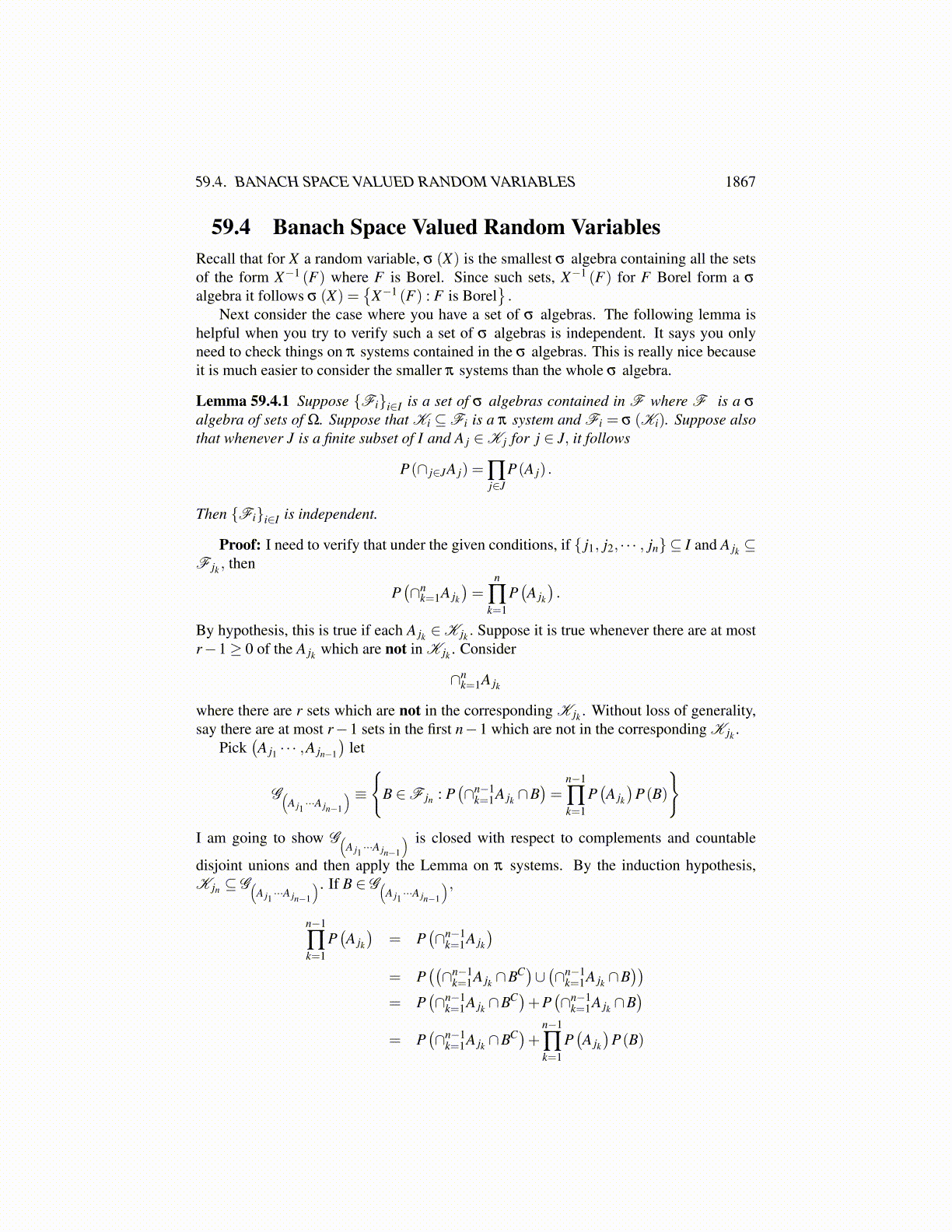
59.3. INDEPENDENCE 1867
independent. Furthermore, if the random variables have values in R, and they are allbounded, then
E
(r
∏i=1
Xi
)=
r
∏i=1
E (Xi) .
More generally, the above formula holds if it is only known that each Xi ∈ L1 (Ω;R) and
r
∏i=1
Xi ∈ L1 (Ω;R) .
Proof: First consider the claim about {gk (Xk)}rk=1. Letting O be an open set in Z,
(gk ◦Xk)−1 (O) = X−1
k
(g−1
k (O))= X−1
k (Borel set) ∈ σ (Xk) .
It follows (gk ◦Xk)−1 (E) is in σ (Xk) whenever E is Borel because the sets whose inverse
images are measurable includes the Borel sets. Thus σ (gk ◦Xk) ⊆ σ (Xk) and this provesthe first part of the lemma.
Let X1 = ∑mi=1 ciXEi ,X2 = ∑
mj=1 d jXFj where P(EiFj) = P(Ei)P(Fj). Then
∫X1X2dP = ∑
i, jd jciP(Ei)P(Fj) =
(∫X1dP
)(∫X2dP
)In general for X1,X2 independent, there exist sequences of bounded simple functions
{sn} ,{tn}
measurable with respect to σ (X1) and σ (X2) respectively such that sn→ X1 pointwise andtn→ X2 pointwise. Then from the above and the dominated convergence theorem,∫
X1X2dP = limn→∞
∫sntndP = lim
n→∞
(∫sndP
)(∫tndP
)=
(∫X1dP
)(∫X2dP
)Next suppose there are m of these independent bounded random variables. Then ∏
mi=2 Xi ∈
σ (X2, · · · ,Xm) and by Lemma 59.3.4 the two random variables X1 and ∏mi=2 Xi are inde-
pendent. Hence from the above and induction,∫ m
∏i=1
XidP =∫
X1
m
∏i=2
XidP =∫
X1dP∫ m
∏i=2
XidP =m
∏i=1
∫XidP
Now consider the last claim. Replace each Xi with Xni where this is just a truncation of
the form
Xni ≡
Xi if |Xi| ≤ nn if Xi > n−n if Xi < n